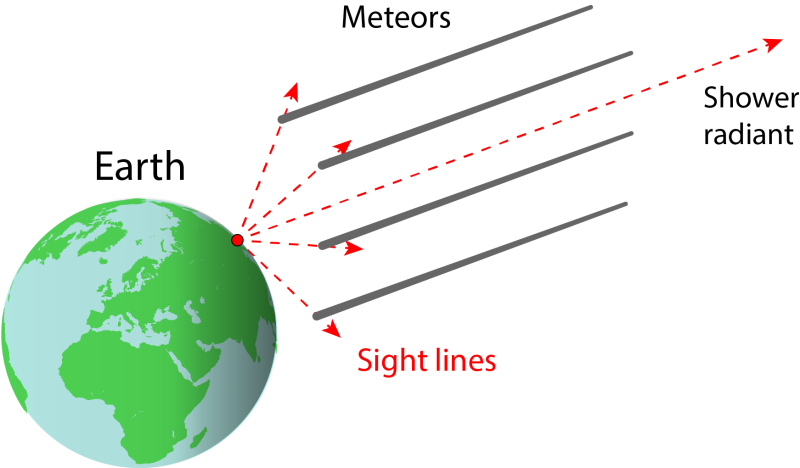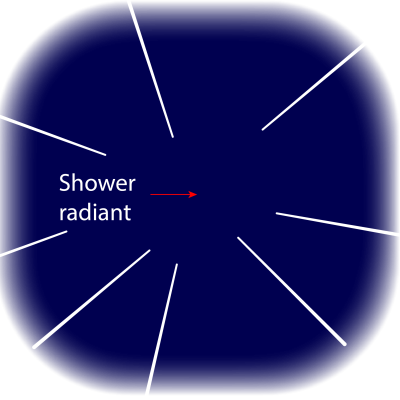2,149 days ago
Dominic Ford, Editor
From
the Meteor Showers
feed
The α-Centaurid meteor shower will be active from 28 January to 21 February, producing its peak rate of meteors around 8 February.
Over this period, there will be a chance of seeing α-Centaurid meteors from anywhere where the shower's radiant point – in the constellation Centaurus – is above the horizon. Unfortunately, however, it will not be visible from South El Monte at any time, since its radiant point never rises above the horizon.
The origin of the shower
Meteor showers arise when the Earth passes through streams of debris left behind in the wake of comets and asteroids. Over time, the pieces of grit-like debris in these streams distribute themselves along the length of the parent object's orbit around the solar system.
Shooting stars are seen whenever one of these pieces of debris collides with the Earth's atmosphere, typically burning up at an altitude of around 70 to 100 km.
On certain days of the year the Earth's orbit passes through particularly dense streams, associated with comets or asteroids which have vented particularly large amounts of solid material to space, and this gives rise to an annual meteor shower. Such showers recur on an annual basis, whenever the Earth passes the particular point in its orbit where it crosses the particular stream of material.


The meteors that are associated with any particular meteor shower can be distinguished from others because their paths appear to radiate outwards from a common point on the sky, which points back in the direction from which their orbital motion brought them.
This is because the grit particles in any particular stream are travelling in almost exactly the same direction when they cross the Earth's orbit, owing to having very similar orbits to the parent object they came from. They strike the Earth from almost exactly the same direction, and at the same speed.
To see the most meteors, the best place to look is not directly at the radiant itself, but at any dark patch of sky which is around 30–40° away from it. It is at around this distance from the radiant that the most meteors will be seen.
By determining the position of this radiant point on the sky, it is possible to work out the orbit of the stream giving rise to any particular meteor shower. It is sometimes even be possible to identify the particular body responsible for creating the debris stream, if there is a known comet or asteroid with a very similar orbit.
The radiant of the α-Centaurid meteor shower is at around right ascension 13h50m, declination 58°S, as shown by the green circle on the planetarium above.
The sky on 8 Feb 2020
| The sky on 8 February 2020 | ||||||||||||||||||||||||||||||||||
|
99% 15 days old |
All times shown in PST.
|
|||||||||||||||||||||||||||||||||
Source
The position of the radiant of this shower, and its predicted hourly rate, were taken from International Meteor Organisation's List of Meteor Showers.
Image credit
© Jacek Halicki 2016. Perseid meteor seen in 2016 from Poland.


